Showing Spotlights 929 - 936 of 2877 in category All (newest first):
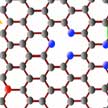 Despite their potential, the practical use of Li-O2 batteries is seriously limited by the corrosion of Li metal by ambient water vapor from air. One way to circumvent this issue is to use an oxygen selective membrane that allows only oxygen into the battery while stopping or slowing water vapor intake. The membrane must be mechanically robust and yet sufficiently thin and light so as to not increase deadweight of the battery. Researchers now have discovered a way to make the thinnest possible oxygen selective membrane using graphene.
Despite their potential, the practical use of Li-O2 batteries is seriously limited by the corrosion of Li metal by ambient water vapor from air. One way to circumvent this issue is to use an oxygen selective membrane that allows only oxygen into the battery while stopping or slowing water vapor intake. The membrane must be mechanically robust and yet sufficiently thin and light so as to not increase deadweight of the battery. Researchers now have discovered a way to make the thinnest possible oxygen selective membrane using graphene.
Apr 25th, 2017
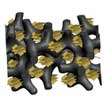 Researchers have demonstrated an all-stretchable-component sodium-ion full battery, designed and manufactured by integrating stretchable graphene-modified PDMS sponge current collector, sodium-ion conducting gel polymer separator, and elastic PDMS substrate. This first-of-its-kind battery design maintains better mechanical properties compared with most reported designs using one or more rigid components that fail to meet the stretchability requirement for the entire device.
Researchers have demonstrated an all-stretchable-component sodium-ion full battery, designed and manufactured by integrating stretchable graphene-modified PDMS sponge current collector, sodium-ion conducting gel polymer separator, and elastic PDMS substrate. This first-of-its-kind battery design maintains better mechanical properties compared with most reported designs using one or more rigid components that fail to meet the stretchability requirement for the entire device.
Apr 20th, 2017
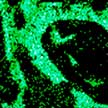 In new work, scientists describe a lithium-sulfur battery prototype using commercially viable micron-sized sulfur as cathode materials but with unprecedented cycling life that has never been achieved before. This success in achieving exceptionally long battery life is ascribed to a concept of self-healing. By mimicking a biological self-healing process, fibrinolysis, the team introduced an extrinsic healing agent, polysulfide, to enable the stable operation of sulfur microparticle (SMiP) cathodes.
In new work, scientists describe a lithium-sulfur battery prototype using commercially viable micron-sized sulfur as cathode materials but with unprecedented cycling life that has never been achieved before. This success in achieving exceptionally long battery life is ascribed to a concept of self-healing. By mimicking a biological self-healing process, fibrinolysis, the team introduced an extrinsic healing agent, polysulfide, to enable the stable operation of sulfur microparticle (SMiP) cathodes.
Apr 19th, 2017
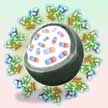 Molecular magnets or single molecule-based magnets are usually anti-ferromagnetic (non-magnetic) at room temperature, which so far has limited their use to laboratory environments. As the first successful molecular magnet in a real-world application, an interdisciplinary research group has reported a new 'exotic' molecular magnet compound - iron salen nanoparticles - which shows intrinsic magnetic nature at room temperature as well as anticancer properties.
Molecular magnets or single molecule-based magnets are usually anti-ferromagnetic (non-magnetic) at room temperature, which so far has limited their use to laboratory environments. As the first successful molecular magnet in a real-world application, an interdisciplinary research group has reported a new 'exotic' molecular magnet compound - iron salen nanoparticles - which shows intrinsic magnetic nature at room temperature as well as anticancer properties.
Apr 13th, 2017
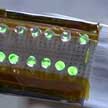 Notwithstanding the progress in extracting renewable energy from many natural resources through nanotechnologies, some 60 research groups worldwide have now begun to develop triboelectric nanogenerators (TENGs) for harvesting energy from 'good (mechanical) vibrations' including human walking and ocean waves, which are otherwise wasted. Nanostructuring the materials in a TENG device amplifies the produced energy by increasing the contact area of the surfaces. Researchers have found a new way to scalably manufacture large area TENGs with a very high-throughput using off-the-shelf materials.
Notwithstanding the progress in extracting renewable energy from many natural resources through nanotechnologies, some 60 research groups worldwide have now begun to develop triboelectric nanogenerators (TENGs) for harvesting energy from 'good (mechanical) vibrations' including human walking and ocean waves, which are otherwise wasted. Nanostructuring the materials in a TENG device amplifies the produced energy by increasing the contact area of the surfaces. Researchers have found a new way to scalably manufacture large area TENGs with a very high-throughput using off-the-shelf materials.
Apr 12th, 2017
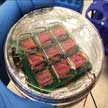 Recently, great progress has been made in the development of bio-hybrid devices with enhanced biological, mechanical and electrical designs. Several muscular tissue based actuators have been described and devices with cultured heart cells have also been reported to produce electrical outputs.
Now, researchers have demonstrated a novel bio-hybrid system, the 'Cell Generator'. The researchers integrated piezoelectric material with 3D-engineered living constructs for energy harvesting and electricity generation.
Recently, great progress has been made in the development of bio-hybrid devices with enhanced biological, mechanical and electrical designs. Several muscular tissue based actuators have been described and devices with cultured heart cells have also been reported to produce electrical outputs.
Now, researchers have demonstrated a novel bio-hybrid system, the 'Cell Generator'. The researchers integrated piezoelectric material with 3D-engineered living constructs for energy harvesting and electricity generation.
Mar 31st, 2017
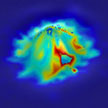 You surely remember one of the hallmarks of the Mission: Impossible series that shows a secret agent receiving his instructions on a tape or other device that then self-destructs and goes up in a cloud of smoke. Getting pretty close to this Hollywood scenario, minus the smoke, scientists now have demonstrated remote destruction capability of high performance silicon electronics. They also show that in case of tempering, dislocation, or light exposure, electronics on for instance stolen or lost hard drives can self-destruct.
You surely remember one of the hallmarks of the Mission: Impossible series that shows a secret agent receiving his instructions on a tape or other device that then self-destructs and goes up in a cloud of smoke. Getting pretty close to this Hollywood scenario, minus the smoke, scientists now have demonstrated remote destruction capability of high performance silicon electronics. They also show that in case of tempering, dislocation, or light exposure, electronics on for instance stolen or lost hard drives can self-destruct.
Mar 29th, 2017
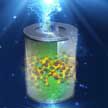 The electrode in lithium-ion (Li-ion) batteries is an integrated system in which both active materials and binder systems play critical roles in determining its final properties. In order to improve battery performance, a lot of research is focussing on the development of high-capacity active materials. However, without an efficient binder system, these novel materials can't fulfill their potentials. Researchers have now developed a new binder system with a nano-architecture promotes both electron and ion transport, which enhances the energy per unit mass and volume of the electrode.
The electrode in lithium-ion (Li-ion) batteries is an integrated system in which both active materials and binder systems play critical roles in determining its final properties. In order to improve battery performance, a lot of research is focussing on the development of high-capacity active materials. However, without an efficient binder system, these novel materials can't fulfill their potentials. Researchers have now developed a new binder system with a nano-architecture promotes both electron and ion transport, which enhances the energy per unit mass and volume of the electrode.
Mar 28th, 2017
 Despite their potential, the practical use of Li-O2 batteries is seriously limited by the corrosion of Li metal by ambient water vapor from air. One way to circumvent this issue is to use an oxygen selective membrane that allows only oxygen into the battery while stopping or slowing water vapor intake. The membrane must be mechanically robust and yet sufficiently thin and light so as to not increase deadweight of the battery. Researchers now have discovered a way to make the thinnest possible oxygen selective membrane using graphene.
Despite their potential, the practical use of Li-O2 batteries is seriously limited by the corrosion of Li metal by ambient water vapor from air. One way to circumvent this issue is to use an oxygen selective membrane that allows only oxygen into the battery while stopping or slowing water vapor intake. The membrane must be mechanically robust and yet sufficiently thin and light so as to not increase deadweight of the battery. Researchers now have discovered a way to make the thinnest possible oxygen selective membrane using graphene.
 Subscribe to our Nanotechnology Spotlight feed
Subscribe to our Nanotechnology Spotlight feed





